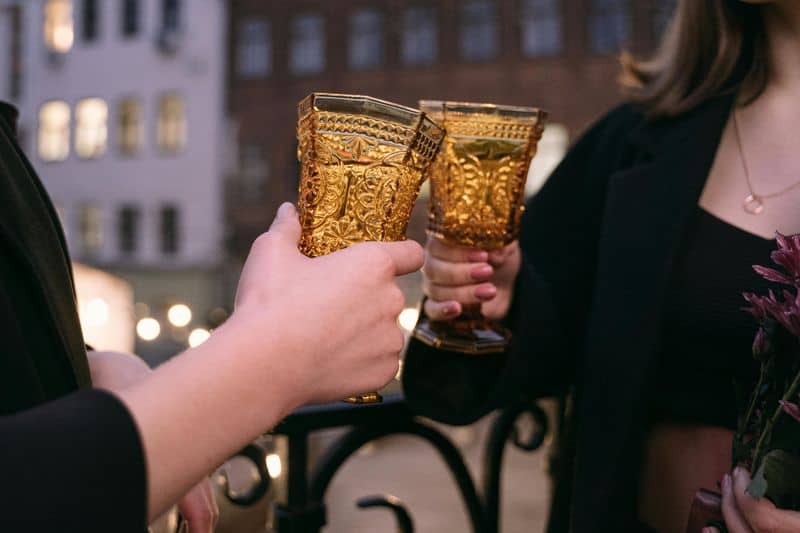Dating looks different depending on which side of the Atlantic you’re on. Europeans and Americans approach romance with unique cultural perspectives that shape everything from who pays the bill to how relationships progress.
Understanding these differences can help travelers, expats, or those in cross-cultural relationships navigate the sometimes confusing world of international dating.
1. The Exclusivity Timeline

Europeans rarely have “the talk” about being exclusive. When you’re seeing each other regularly in places like France or Italy, exclusivity is often assumed without needing to spell it out.
Americans, meanwhile, often date multiple people simultaneously until someone initiates that important “What are we?” conversation. This dating-around approach allows Americans to explore options before committing, while Europeans generally focus on one person at a time.
This fundamental difference creates countless misunderstandings when Europeans and Americans date each other, with Europeans feeling betrayed when learning their American date is seeing others, while Americans might feel rushed into commitment.
2. Meeting Places Matter

Europeans often build romantic connections through social circles and everyday activities. Meeting at a friend’s dinner party, during university studies, or through workplace connections creates natural foundations for relationships.
Dating apps dominate the American scene, with nearly half of under-30s using platforms like Tinder, Bumble, and Hinge. Americans embrace the efficiency of screening potential matches before investing time in face-to-face meetings.
This contrast reflects broader cultural values – Europeans prioritize organic social connections while Americans value technological efficiency and direct approaches to finding compatible partners. The difference affects how couples tell their origin stories and the social validation relationships receive.
3. Public Displays of Affection

European couples embrace public affection without hesitation. Couples kissing in Paris parks, holding hands through Italian piazzas, or cuddling on German public transportation is completely normal and even expected.
Americans typically show more restraint in public spaces. While hand-holding is common, passionate kissing or extended physical contact often draws disapproving glances in many American regions, especially outside major coastal cities.
This difference reflects deeper cultural attitudes about privacy and sexuality. Europeans generally separate public affection from sexuality, seeing it as a natural expression of connection, while American culture often links public displays with more intimate behaviors best kept private.
4. Who Pays the Bill?

Dutch dating (splitting the bill) dominates European dating culture. Swedish couples meticulously divide expenses, while Germans and Dutch typically pay for exactly what they ordered, reflecting egalitarian values where financial independence matters.
Traditional gender expectations still influence American dating, with men often expected to pay for early dates. Though changing with younger generations, the “gentleman pays” norm persists across many American regions and demographics.
The money conversation reveals deeper cultural attitudes. Europeans approach dating finances as they would friendships, while Americans often view who pays as symbolic of interest level and relationship roles. This difference can create awkward bill-time moments during international dating!
5. Communication Frequency

Europeans typically maintain relaxed communication between dates. Messages serve practical purposes – confirming plans or sharing occasional thoughts – rather than constant connection. Hours or even a day between texts isn’t concerning.
American dating culture embraces frequent digital contact. Good morning texts, checking in throughout the day, and goodnight messages often signal interest and commitment. Many Americans interpret delayed responses as waning interest.
This contrast creates friction in cross-cultural relationships. Europeans may feel suffocated by American communication expectations, while Americans might interpret European messaging patterns as disinterest or ghosting. Understanding these differences helps prevent unnecessary relationship anxiety when dating across cultural lines.
6. Relationship Pace and Milestones

European relationships typically develop at a leisurely pace. Couples might date for years before moving in together, with marriage considered optional rather than inevitable. In Denmark and Sweden, many committed couples never marry despite having children and building lives together.
Americans follow more structured relationship timelines with clear progression markers. Dating, exclusivity, meeting families, moving in, engagement, and marriage often follow predictable patterns and timeframes, with social pressure to keep advancing.
This difference reflects contrasting views on partnership. Europeans prioritize the relationship quality regardless of formal status, while Americans often view advancing through relationship stages as proof of success and commitment. Neither approach is wrong – just culturally distinct!
7. Work-Life Balance Impact

Europeans protect their personal time fiercely. With 4-6 weeks of vacation standard and shorter workweeks, Europeans build relationships around leisure time, weekend getaways, and unrushed evening dates that start at 8 or 9 pm.
American work culture often creeps into dating life. Busy professionals squeeze dates between meetings, check work emails during dinner, and may struggle to truly disconnect. Weekend mornings might involve work catch-up rather than lazy brunches.
Dating Europeans often surprises Americans with questions like “Why do you work so much?” while Europeans may feel neglected by work-focused American partners. This fundamental difference in time allocation shapes how couples connect and the activities they prioritize during dating phases.
8. Family Involvement Levels

Family appears early and often in European dating scenarios. Sunday family lunches, holiday gatherings, and regular family visits are normal even in new relationships. European parents often take active interest in their adult children’s romantic lives.
Americans typically introduce partners to family at more established relationship stages. Meeting parents signals serious intentions, sometimes happening months or even a year into dating. Family gatherings center around major holidays rather than weekly events.
Cultural attitudes toward independence shape this difference. Europeans maintain closer family connections throughout adulthood, while Americans emphasize building independent lives separate from family origins. Cross-cultural couples must navigate these differing expectations about how quickly and frequently family should be involved.
9. Approach to Dating Conversations

Europeans dive into substantial topics early in dating relationships. Politics, religion, social issues, and philosophical views emerge naturally in first dates across European countries, where intellectual compatibility matters from the start.
American dating conversations often begin with lighter fare. Career discussions, hobbies, entertainment preferences, and funny anecdotes dominate early dates. Deeper topics emerge gradually as comfort builds between partners.
The conversational gap reflects different priorities in partnership formation. Europeans screen for worldview alignment before emotional investment, while Americans build emotional connection first before testing compatibility on potentially divisive topics. Neither approach guarantees better outcomes – just different paths to discovering compatibility!
10. Dating Multiple People Simultaneously

European dating typically follows a serial pattern – focusing on one person at a time to evaluate compatibility before moving on if things don’t work out. Dating multiple people simultaneously is often considered disrespectful or shallow across many European countries.
Americans embrace parallel dating, especially in early stages. Seeing several potential partners allows efficient comparison shopping for compatibility. Dating apps encourage this approach, with active conversations and dates with multiple prospects considered normal.
This fundamental difference creates countless misunderstandings in cross-cultural dating. Europeans may feel betrayed learning their American date is seeing others, while Americans might feel unnecessarily constrained by European expectations of early exclusivity before they’ve determined compatibility.
Lover of good music, reading, astrology and making memories with friends and spreading positive vibes! 🎶✨I aim to inspire others to find meaning and purpose through a deeper understanding of the universe’s energies.

